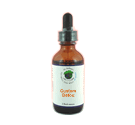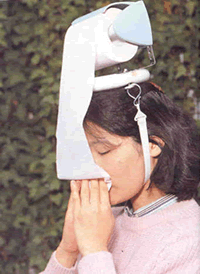|
|
Rhinovirus
Human rhinoviruses are the most common viral infective agents in humans and are the predominant cause of the common cold. There are two modes of transmission: aerosols of respiratory droplets and contaminated surfaces, including direct person-to-person contact.
Human rhinoviruses occur worldwide. Symptoms include sore throat, runny nose, nasal congestion, sneezing and cough. They may also be accompanied by muscle aches, fatigue, malaise, headache, muscle weakness, or loss of appetite. Fever and extreme exhaustion are more common in influenza. In the United States, the incidence of colds is higher in the autumn and winter, with most infections occurring from September to April. Many children may have six to twelve colds a year! The seasonality may be due to the start of the school year and to people spending more time indoors (thus in proximity with each other) which increases the chance of transmission of the virus.
The primary route of entry for Human rhinoviruses is the upper respiratory tract. Then the virus binds to ICAM-1 receptors on respiratory epithelial cells. As the virus replicates and spreads, infected cells release distress signals known as chemokines and cytokines (which in turn activate inflammatory mediators).
Infection occurs rapidly, with the virus adhering to surface receptors within 15 minutes of entering the respiratory tract. Just over 50% of individuals will experience symptoms within 2 days of infection. Only about 5% of cases will have an incubation period of less than 20 hours and 5% of cases can have an incubation period of greater than four and a half days.
|
|
| |
Rhinovirus Detox Remedy
Detoxification of all Rhinovirus and related species
$14.95
Read/Write Reviews
|
 Add
To Cart Add
To Cart |
 |
 |
Herpes Detox Remedy
Detoxification of all Herpes and related species
$14.95
|
 Add
To Cart Add
To Cart |
 |
 |
Influenza Detox Remedy
Detoxification of all Influenza and related species
$14.95
|
 Add
To Cart Add
To Cart |
 |
 |
Mumps Detox Remedy
Detoxification of all Mumps and related species
$14.95
|
 Add
To Cart Add
To Cart |
 |
 |
|
|
 Arthropod/Vector
Bacteria
Chemicals
Fungus /Mold
/ Yeast Metals Parasites Virus Other
Arthropod/Vector
Bacteria
Chemicals
Fungus /Mold
/ Yeast Metals Parasites Virus Other


